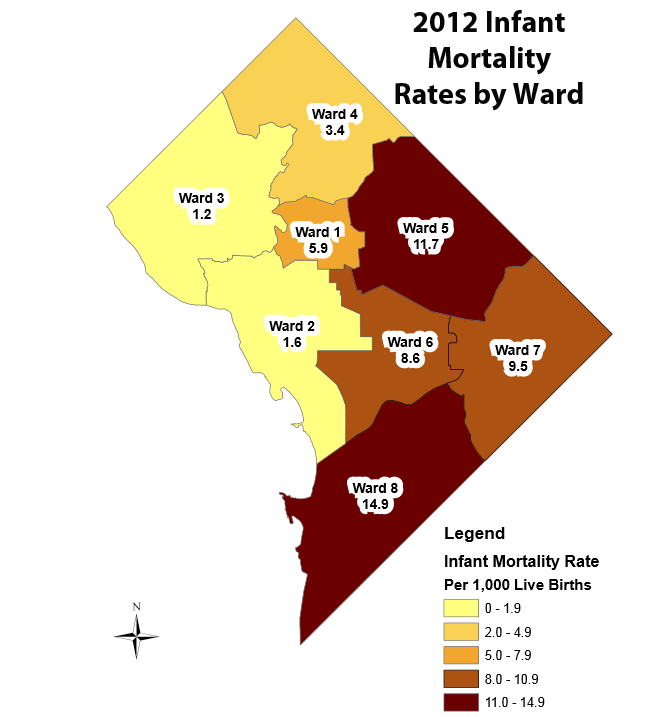WASHINGTON — Babies born in one of the District’s poorest areas are more likely to die before their first birthday than those born in wealthier, better educated neighborhoods in Northwest D.C.

The discrepancies in health care and survival rates found in D.C. neighborhoods are repeated in cities across the globe, according to Save the Children’s annual State of the World’s Mothers report, which found that a growing proportion of child deaths occur in urban slums world wide.
The District’s infant mortality rate at 6.6 is higher than 24 other international capitals in developed nations and is higher than the U.S. average, which is 6.1, according to the study.
“While this rate is an all-time low for the District of Columbia, it is still three times the rates found in Tokyo and Stockholm,” the report says.
But the disparities are even larger when comparing Ward 8, south of the Anacostia River where more than half of children live in poverty. Babies there are 10 times more likely to die by their first birthday than babies born in Ward 3 in Northwest D.C., the report found.
Similar inequities between the urban rich and urban poor were documented in Japan, Canada and Switzerland, according to the report.
“This is information that many of us in the health community are well aware of and we have been galvanizing our efforts to address this inequity,” says Dr. Marcee White, a pediatrician and medical director of Children’s National Community Health Center in Ward 8. “It’s going to take a village to really address this issue.”
Smoking. Chronic stress. Lack of access to healthy fruits and vegetables. Not seeking medical attention early on during a pregnancy. A mother’s weight.
All are factors that contribute to the higher rates of infant mortality in Ward 8, where mothers worry about providing food for their children and who work jobs that don’t offer them the flexibility to make regular doctor visits, says White.
Cigarettes offer a brief escape for women, who know smoking is not healthy for them or their children, White says.
“It takes healthy mothers to give birth to healthy babies,” White says.
Doctors have to go beyond asking medical questions and about prescriptions. Doctors need to ask mothers if they feel safe at home, if they have enough food and to offer alternative stress-relievers to smoking, which can led to premature birth and increases the risk of Sudden Infant Death Syndrome — a common cause of death for infants in the ward, White says.
Infant mortality is often considered a measurement of a community’s overall well-being. But it could also be used as a barometer of poverty.
And areas with high poverty rates go hand-in-hand with high rates of infant mortality in the District, White says.
Seventy percent of infants who die in the city have mothers who are covered by Medicaid — the government funded insurance is another indication of poverty, she says.
Complications related to premature birth, poor prenatal care and young, uninformed mothers were some of the reasons behind urban infant death rates. But race also plays a role, according to Save the Children.
Ward 8 is home to a population that is 94 percent black. Whereas Ward 3 has a population that is 84 percent white and is home to the wealthiest neighborhoods in the city, according to 2010 U.S. Census results.
Despite comparing poorly to other international cities, the District’s infant mortality rate is still lower than other U.S. cities.
Babies die at far greater rates in Cleveland, Detroit and Baltimore, among others.







